Rolling Stones - Honky Tonk Women
| Rock Notes |
Rolling Stones - Honky Tonk Women
Anyone who has watched USA films from the Deep South or South-West must have seen Honky Tonk – a type of bar, where small bands play dancing music. Sometimes, in smaller places, the music was delivered by only a piano or a jukebox.
The origin of the term honky tonk is not clear. „Tonk” was apparently related to William Tonk & Bros, piano makers. The factory’s products, made in Chicago and New York, were commonly known as „Tonk pianos”. The firm was established in 1889. This date casts significant doubts on the claims about the word’s origin.
Honky Tonk Women
The first time the term honky tonk is known to have been used was in Galveston Daily News in Galveston, Texas, in 1892. The exact word used was honkatonk. Two years later in Oklahoma in Daily Ardmoreite it looked a little different: honk-a-tonk. In 1900 an article about honk a tonk was printed in New York Sun. This article was then re-printed in all parts of the country, which led to it being commonly used. Perhaps that is why the word tonk has been linked to a name of a piano.
Honky tonk, however, had been in use much earlier, at least since around 1860. The famous sheriff Wyatt Earp mentioned the presence of Honky Tonk bars in many cowboy towns in Kansas, Nebraska and Montana. He wasn't the only one. I don't think these people anticipated the existence of William Tonk's pianos in later years.
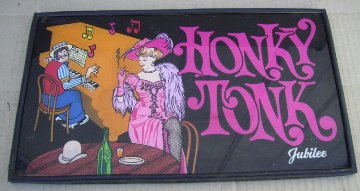
Honky Tonk Jubilee, 1920
The origin of the word "Honky" is also confusing. In the beginning of 20th century it meant an immigrant from Poland, Czech Republic or Hungary. It was used by their black co-workers in Chicago. W.C. Handy in his autobiography mentioned "Negroes and Hunkies". The combination of Mid-European immigrant and a piano manufacturer is a little extravagant, but this is what linguists have come up with. But nevermind.
The first Honky Tonks had a form of "variety shows" ("variety theatres"). They were aimed at working men. Apart from music and shows they often included gambling rooms, erotic services and always a licensed drink bar. They were quite similar at that time to saloons and dance halls. Honky Tonk could be found all over the country, even in New York. In the South they were partly replaced by juke joints, where bands played blues and jazz.
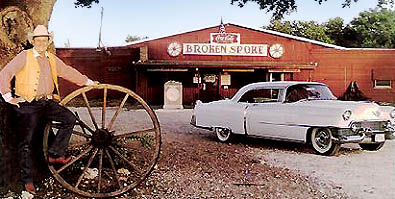
Honky Tonk in Texas, 1960
The most important instrument was piano. This is why the music was based on ragtime and later on boogie woogie. It was gradually evolving towards country music and eventually became one of its variations. The first big hit of this genre was called "Honky Tonk Train Blues" by Meade "Lux" Lewis in 1927. Lewis recorded it repeatedly until 1950. Honky Tonk Music was made popular by Jelly Roll Morton, a pianist who began his career with ragtime and boogie woogie. From 1938 he called his music honky tonk.
How is this genre related to Rolling Stones? Well, it turns out, in some way it is. In the end of 1968 and beginning of 1969 Mick Jagger and Keith Richards were on holiday in Brazil. Not in a city, but on a rancho among Brazilian cowboys called gaucho. Richard recalled:
"Honky Tonk Women" started in Brazil. Mick and I, Marianne Faithfull and Anita Pallenberg who was pregnant with my son at the time. Which didn't stop us going off to the Mato Grasso and living on this ranch. It's all cowboys. It's all horses and spurs. And Mick and I were sitting on the porch of this ranch house and I started to play, basically fooling around with an old Hank Williams idea. 'Cause we really thought we were like real cowboys. Honky tonk women. And we were sitting in the middle of nowhere with all these horses, in a place where if you flush the john all these black frogs would fly out. It was great. The chicks loved it. Anyway, it started out a real country honk put on, a hokey thing. And then couple of months later we were writing songs and recording. And somehow by some metamorphosis it suddenly went into this little swampy, black thing, a Blues thing. Really, I can't give you a credible reason of how it turned around from that to that. Except there's not really a lot of difference between white Country music and black Country music. It's just a matter of nuance and style. I think it has to do with the fact that we were playing a lot around with open tunings at the time. So we were trying songs out just to see if they could be played in open tuning. And that one just sunk in."
In February 1969 the band recorded "Country Honk". Brian Jones did not take part in the recording, as he was badly affected by his drug-using lifestyle. The other band members had realised they could not count on him any longer. They decided to recruit a new guitarist. They chose Mick Taylor.
Taylor has a significant influence on the end result. It was through his inspiration that Country Honk underwent a metamorphosis. In his free time before the concert he played the beginning in rock style. Probably the characteristic riff on guitar was his idea. Richards took a real liking to it. As he said "it suddenly went into this little swampy, black thing, a Blues thing."
They went to the studio again and recorded
Honky Tonk Women.
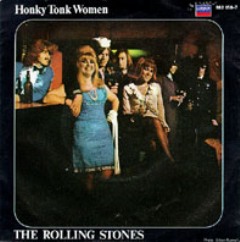
Rolling Stones - Honky Tonk Women - Single
Richards and Jagger remembered about its cowboy origin. The song starts with the sound of cow bells. That part was performed by Rolling Stones producer Jimmy Miller. The characteristic guitar riff, althought being Taylor's idea, was played by Keith Richards. Charlie Watts' performance on drums is very good, too, in my opinion.
Honky Tonk Women was released in the UK on 4th July 1969 (the day after Brian Jones died) and in the US on 11th July 1969. On side B was a song "You Can't Always Get What You Want". The single climbed to the top of Billboard Hot 100 in August and remained there for four weeks. Soon after that Ry Cooder came out with accusations against Richards, caliming that the guitar riff was copied by Keith from him. The Stones pianist comfirmed it in some interview, stating that Richards had heard the riff in Cooder's recording ten times. I don't know how the dispute ended, most likely they had come to some agreement.
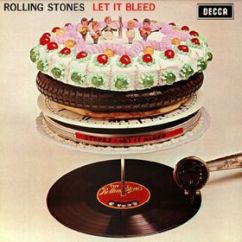
Rolling Stones - Let It Bleed, album
The lyrics have clear sexual themes. It is a story about a girl dancing in a bar, who probably was a prostitute. An interesting detail - during the Rolling Stones 2003 tour in China the authorities banned this song from being performed.
The song's success was enormous, but the Rolling Stones did not give up on their original plan. Five months later the cowboy version, "Country Honk", appeared on album called "Let It Bleed". The fiddle was played by Byron Berline. The producer Glyn Johns suggested that Berline should record his part outdoors. It was mixed with the rest of the song in Elektra studio. Such details are very interesting and we wouldn't find out about them by simply listening to the record.
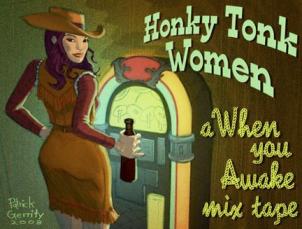
Patrick Gerrity - Honky Tonk Woman, 2008
The magazine Rolling Stone placed Honky Tonk Women on 116 position on the list of 500 Greatest Songs Of All Time. Many rock fans believe, however, that it is the best rock'n'roll piece ever created.
In the music box Honky Tonk Women and Country Honk for comparison.
Honky Tonk Women, lyrics
I met a gin soaked, bar-room queen in memphis,
She tried to take me upstairs for a ride.
She had to heave me right across her shoulder
cause I just cant seem to drink you off my mind.
Its the honky tonk women
Gimme, gimme, gimme the honky tonk blues.
I laid a divorcee in new york city,
I had to put up some kind of a fight.
The lady then she covered me with roses,
She blew my nose and then she blew my mind.
Its the honky tonk women
Gimme, gimme, gimme the honky tonk blues.
(yeah!) its the honky tonk women.
Gimme, gimme, gimme the honky tonk blues.
(yeah!) its the honky tonk women.
Gimme, gimme, gimme the honky tonk blues
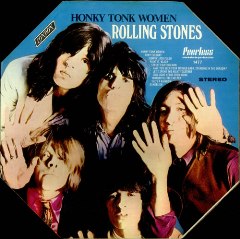
Last Updated (Sunday, 15 March 2015 22:04)








